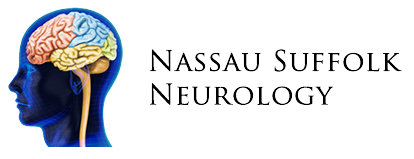The following tests are available at Nassau Suffolk Neurology P.C.
EMG/NCV
Electromyography (EMG) and Nerve Conduction Velocity (NCV) studies are specialized diagnostic tests that evaluate the function of muscles and the nerves controlling them. These tests are commonly used to identify nerve or muscle disorders, such as peripheral neuropathy, radiculopathy (pinched nerves), carpal tunnel syndrome, and muscular dystrophies. During the procedure, small electrodes are used to measure the electrical activity in muscles at rest and during contraction, while the speed and strength of signals traveling through the nerves are also assessed. These studies are essential tools in investigating symptoms like muscle weakness, tingling, numbness, and chronic pain.
EEG
An Electroencephalogram (EEG) is a non-invasive test that records the electrical activity of the brain using sensors (electrodes) placed on the scalp. EEGs are most often used to diagnose and monitor conditions that affect brain function, including epilepsy and seizure disorders, sleep disorders, encephalopathy, brain infections, and dementia. This test helps identify abnormal brain wave patterns that may indicate neurological problems. It is safe, painless, and typically performed while the patient is awake or asleep, depending on the condition being evaluated. For more information on EEG Testing, please click here.
BAER
The Brainstem Auditory Evoked Response (BAER), also known as Auditory Brainstem Response (ABR), is a diagnostic test that measures how the brain processes sound. It assesses the auditory nerve pathways from the ear to the brainstem. This test is particularly useful in diagnosing hearing loss, auditory nerve damage, multiple sclerosis, and other neurological disorders that may affect hearing or balance. During the test, you will hear clicking sounds or tones through headphones while electrodes placed on your head record the brain’s electrical responses. BAER is safe, quick, and often used in both children and adults.
VER
A Visually Evoked Potential (VEP), also called Visual Evoked Response (VER), is a test used to measure the electrical signals in the brain in response to visual stimuli. It is used to detect and monitor diseases that affect the optic nerve and visual pathways, such as optic neuritis, multiple sclerosis, and certain types of tumors. During the test, the patient focuses on a visual pattern (like a flashing checkerboard) while sensors on the scalp monitor the brain’s response. This test is non-invasive and helps neurologists understand how well visual signals travel from the eyes to the brain.
Balance Testing
Balance testing involves a series of evaluations designed to assess the function of the vestibular system, which includes the inner ear, brain, and sensory pathways that help control balance and spatial orientation. These tests are useful for diagnosing conditions such as vertigo, Meniere’s disease, vestibular neuritis, and other disorders that can cause dizziness, imbalance, vision changes, nausea, and coordination problems. Common types of balance testing include videonystagmography (VNG), posturography, and head impulse tests. Understanding the root cause of balance issues is essential in developing effective treatment and rehabilitation strategies.
ANS Study
The Autonomic Nervous System (ANS) controls involuntary bodily functions such as heart rate, blood pressure, breathing, digestion, and temperature regulation. ANS testing evaluates the performance of these automatic functions to detect any dysfunction or abnormal regulation. Conditions such as diabetes, Parkinson’s disease, multiple system atrophy, and chronic fatigue syndrome can lead to autonomic dysfunction, resulting in symptoms like fainting, dizziness, abnormal sweating, or heart rate variability. ANS studies may include tests such as tilt table testing, heart rate variability analysis, and sweat testing. These assessments help neurologists diagnose and manage disorders that affect the body’s unconscious systems.
